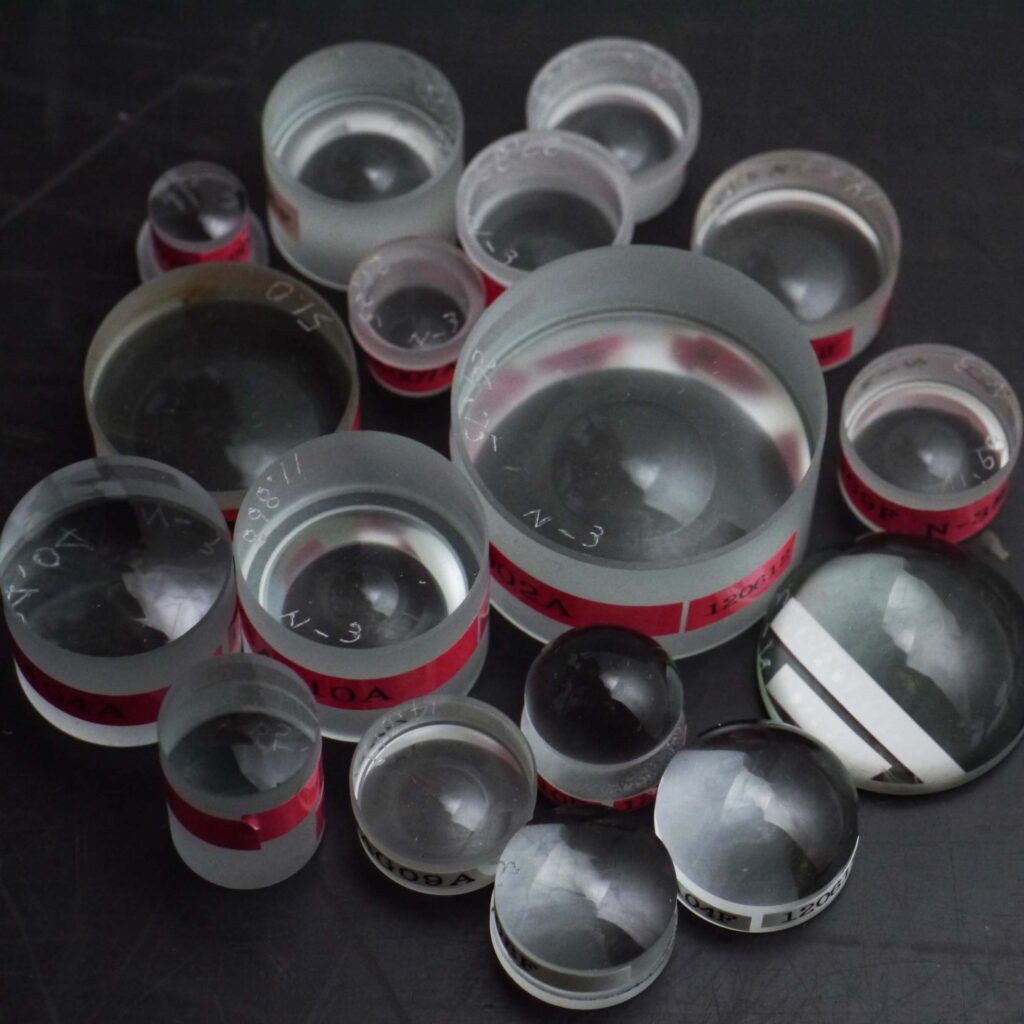Interference rings projected by test plate glasses

The above photograph is of a phenomenon known as “Newton’s Rings.” Newton’s Rings are concentric circles that can be observed when light is projected on two overlapping optical elements. They are generated by light that reflects off the two elements in the air space between them and interferes with itself. The phenomenon is named after Isaac Newton, the founder of classical mechanics who formulated the Law of Gravity and discovered the rings. If the two contacting optical elements are identically curved, air cannot get between them and the Newton Rings do not form. The greater the curved faces differ, the thicker the air space and the more rings are formed. The number of these Newton Rings can be used to verify the curvature precision of an optical element.

What is necessary here is a “test plate glass” with the standard curvature of optical element. A test plate glass is made of transparent glass and its curved surface represents the standard profile of an optical element’s surface. A very precise test plate glass is the key to making high quality optical products.
Since a typical optical element’s profile is a section of a sphere, test plate glasses are categorized by radius or R. For example, R40 indicates a spherical surface with a radius of 40 mm; the higher the number, the more gradual the curvature; the lower the number, the sharper the curvature. A variety of test plate glasses are prepared in line with design specifications. Polished optical elements are compared against them to verify profile precision.

By lapping an optical element with a polishing plate that has opposite curvature, an optical element will have a specified design profile. During this process, the Newton’s Rings that form between the optical element and a test plate glass are monitored to get an idea of how precise the profile of optical element is. The number of Newton’s Rings are checked after polishing, too, to verify precision. For this check, a sheet of lens cleaning paper is set in between the polished optical element and the reference test plate glass in order to keep minute dust and dirt from getting between the optical element and test plate glass, but it is also a measure we insist upon in order to protect the test plate glass against scratches since it is virtually the almighty “creator” of lenses.